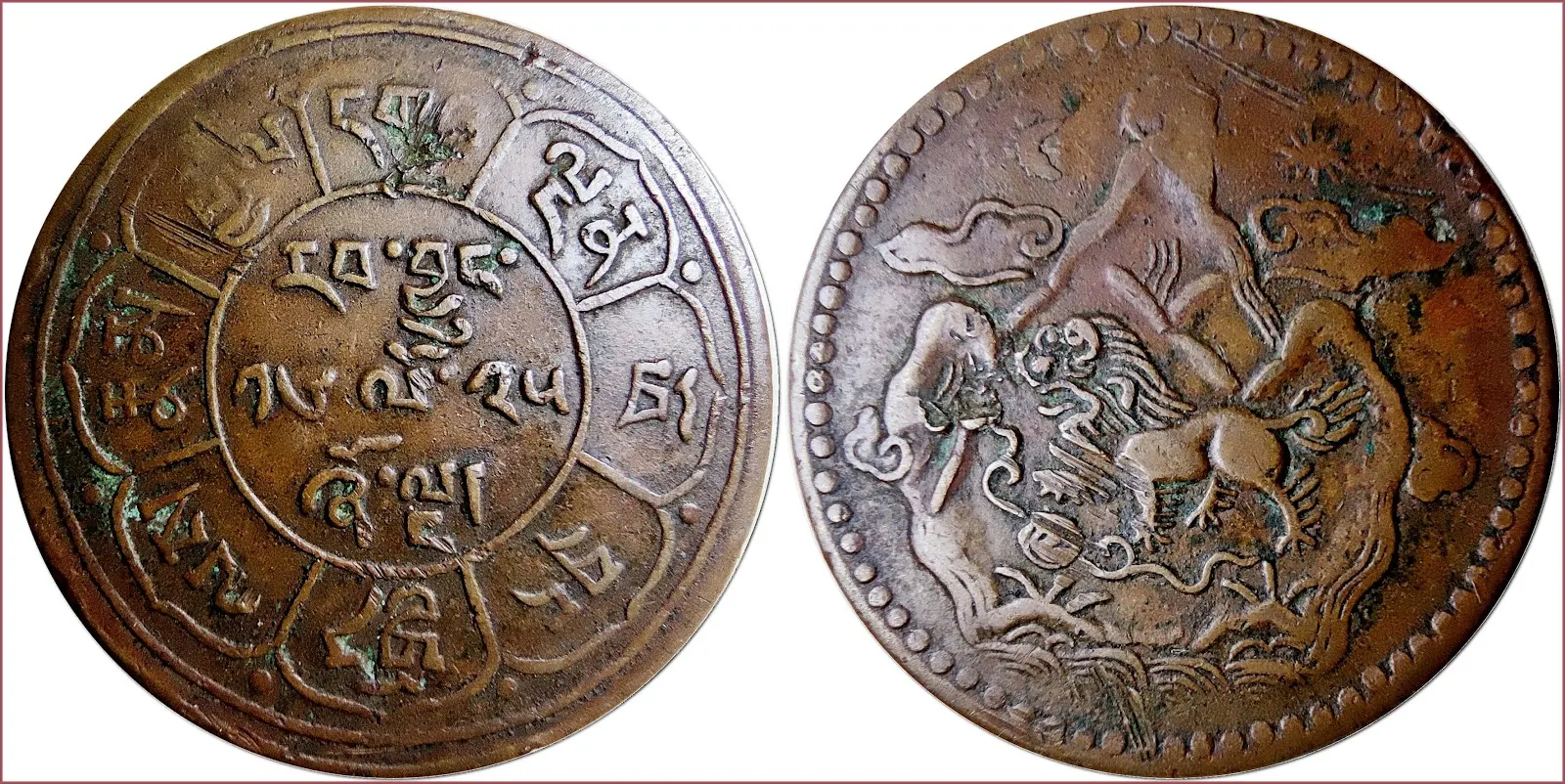SHO: COIN OF TIBET
5 sho, 1951: Tibet
Ruler: Tenzin Gyatso (Jetsun Jamphel Ngawang Lobsang Yeshe Tenzin Gyatso) — the 14th Dalai Lama of Tibet.
Date on coin: ༡༦-༢༥ (16-25: Tibetan calendar) = 1951 (Gregorian calendar).
In accordance with the Tibetan calendar, the timeline is divided into the equal time cells, — 60 years. The rule for writing the date on Tibetan coins is: the number of the cycle is specified first, followed by the serial number of a year in the current cycle.
Tibetan legend placed in the petals of an eight-petalled lotus and in the center of a floral ornament.
དགའ་ལྡན་ཕོ་བྲང་ - ཕྱོ་ - ལས་རྣམ་ - རྣམ་རྒྱལ། - རབ་བྱུང་: The Ganden palace (Ganden Phodrang — the Tibetan government that was established by the 5th Dalai Lama in 1642), victorious in all directions.
Moon and sun over three mountains (previous types of this coin were minted with images of two suns instead of the sun with the moon and with two mountain peaks instead of three).
Snow lion as a character of Buddhist mythology and an element of the Tibetan coat of arms.
- Copper: 29 mm - 8.25 g
- Reference price: 9.9$
COIN SHO — WHERE & WHEN (coins catalog: by names & emitents)
- TIBET (18th-20th centuries): sho = 10 skar = 1/10 srang (in parallel: sho = 10 skar = 2/3 tangka)
The etymology of the name of the sho coin is not clear, but it is known that the coin in 1 sho was called "Zho Gang". Accordingly, some modern numismatics sources indicate the name of the coin sho as shokang.











